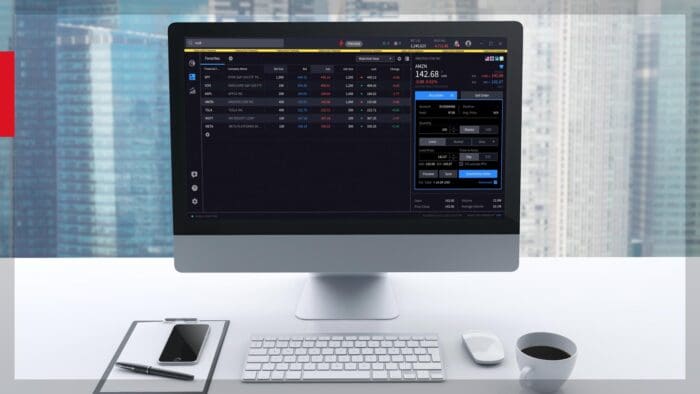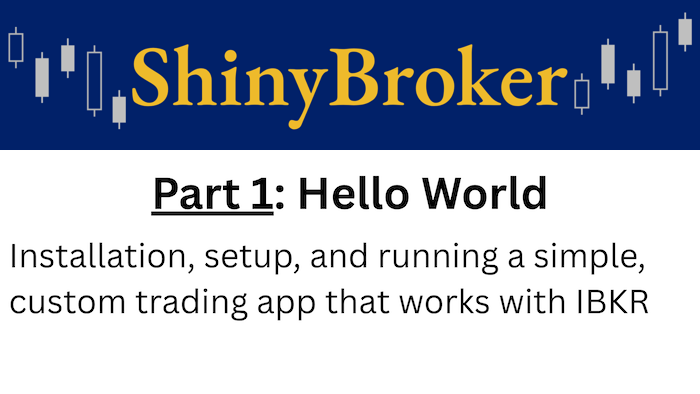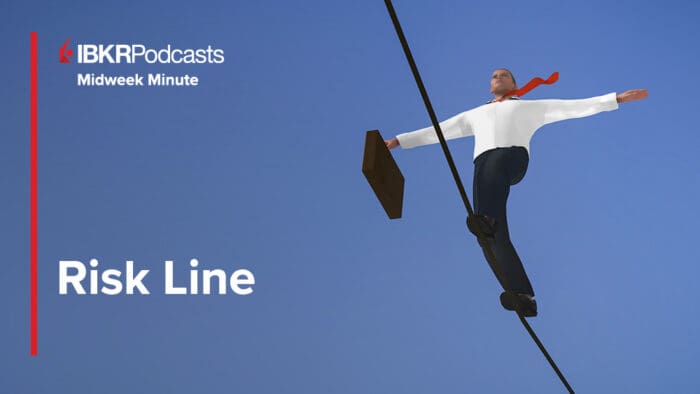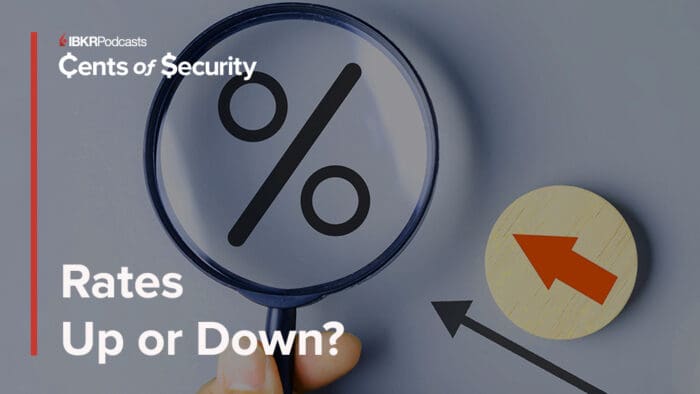Introduction
In a previous article, I summarized why insurance companies, municipalities, utilities, or other organizations with broad hurricane exposure in specific US counties might consider buying YES Forecast Contracts on major landfalling hurricanes as a hedge, similar to insurance. In that article, I briefly discussed why counterparties might be interested in taking the NO position. In this article, I will explore in much more detail how taking the NO side on major landfalling hurricanes can add substantial value to an investment portfolio by increasing its diversity and thereby reducing its downside risk.
A central principle of investment management is the risk-return tradeoff, where invested money can achieve higher expected average returns only if the investor is willing to accept higher risk of an investment losing value. A classic example is that equities, or stocks, have a higher average return (in percent per year) than U.S. Treasuries or bonds, but also higher volatility or downside risk.
A key strategy to reduce the overall risk of losing value is diversification: It’s less likely you’ll lose everything if you don’t put all your eggs in one basket. Within each asset class (such as stocks), diversification can be achieved by investing in companies across distinct industries, and making the financial portfolio diverse across various asset classes is even more effective. However, due to systemic risk in the economy, even the effectiveness of diversification across asset classes has its limits, as all asset classes could lose value simultaneously during a broader recession or depression. Therefore, fund managers sometimes turn to “alternative” asset classes, such as catastrophe bonds, market-neutral hedge funds, or timberland, which are less closely tied to the overall economy’s performance and thus shield parts of the portfolio from systemic downturns.
Similarly, the NO side of major (Category 3+) hurricane landfall Forecast Contracts, for example, can potentially provide attractive returns while diversifying a portfolio, helping to reduce overall risk.
In the remainder of this article, I illustrate this concept with a hypothetical example that utilizes concrete numbers.
Stocks and Bonds
Suppose a portfolio manager is evaluating an investment strategy over a 10-year time horizon and must decide how to allocate funds among stocks, bonds, and the NO side of major hurricane landfall Forecast Contracts. Let’s assume the default allocation is 50% stocks, 50% bonds, and 0% Forecast Contracts, but the manager is considering shifting some funds from stocks and bonds to Forecast Contracts.
Using historical averages as a guide, I’ll assume that stocks have a real mean annual return of about 7%, and bonds (such as U.S. Treasuries) have a mean annual return of roughly 3%.
The value of bonds (on the secondary market) fluctuates less than stocks, making them a more reliable or less risky investment. The volatility of investments is usually measured using standard deviation, and I’ll assume that, on an annual basis, this is 17% for a sleeve of stocks and 6% for bonds. I also assume a 0.4 lag-1 year autocorrelation to reflect the idea that economic fluctuations tend to persist for more than a year.
Forecast Contracts
The portfolio manager is also considering the NO side of major hurricane landfall Forecast Contracts in given counties as a potential asset class.
I’ll assume that the probability of a hurricane hitting in any given year is 10% so the true YES value is $0.10, the true NO value is $0.90 per contract.
The key dynamic is that those seeking to hedge risk should bid YES prices higher than their true actuarial value, reflecting a risk premium they are willing to accept in exchange for the hedge. This would consequently cause NO Forecast Contract prices to become undervalued or to “go on sale”. I’ll assume that YES bids are outstanding at $0.14 per contract, meaning NOs can be bought at $0.87 per contract (since YES+NO must equal $1.01, reflecting a $0.01 fee collected by the exchange). With the true value of NOs at $0.90 per contract, this provides a small edge or an expected return of $0.90/$0.87 = 3.45%.
Additionally, Interactive Brokers offers a 3.83% incentive coupon on the $0.87 per contract. Subtracting 2% for inflation, the real expected rate of return for these NO Forecast Contracts would be 3.45% + (3.83% – 2.00%) = 5.28%.
However, purchasing these contracts for a single county carries a relatively high risk. In this case, there would be a 10% chance that a major hurricane would make landfall, resulting in the loss of most of the investment (the purchaser would still have earned the incentive coupon during the time before the hurricanes hit). However, buying NO Forecast Contracts across multiple counties greatly reduces this risk.
Figure 1 illustrates this by showing the probability of losing the entire investment in Forecast Contracts as a function of the number of counties included in the Forecast Contract sleeve. When the likelihood of a hurricane landfall is assumed to be independent across counties (meaning a hurricane hitting one county in a year does not imply an increased likelihood of another hurricane hitting a different county in that year), the probability that, for example, five different counties, each with 10% risk, will all experience a hurricane, is 0.1^5, or 0.0001%.
In reality, there is some basin-wide correlation (some years are more or less favorable to hurricanes across the entire Atlantic, causing county chances to rise and fall together to some extent). But even if I assume a correlation of 0.4, the probability of losing the entire investment becomes extremely small as more distinct counties are included.
Figure 1: Probability of total loss in a NO Hurricane Landfall Forecast Contract sleeve as a function of the number of counties included.
Each line represents a different assumed level of pairwise correlation (ρ) in hurricane landfall probability across counties. Even with substantial correlation (ρ = 0.4), the chance of losing the entire sleeve falls rapidly as the number of counties increases.
Source: Produced with MATLAB.
For the remainder of the analysis, I will assume an inter-county correlation of 0.4 and that 10 separate counties make up the Forecast Contract sleeve of the portfolio.
Figure 2 illustrates the average returns and volatilities (expressed as standard deviations in percentage terms) of the three asset classes, as summarized across 10,000 decade-long Monte Carlo simulations.
Stocks and Bonds are assumed to be purchased at the beginning and held for the entire decade, while hurricane landfall Forecast Contracts are re-purchased at the beginning of each year and held for the entire year.
We observe that, under the assumptions outlined above, stocks have the highest average returns, followed by the Forecast Contracts and then Bonds. Volatility follows the same order.
Figure 2 also displays the Sharpe Ratio, which is the ratio of the average return (relative to a risk free return) to the standard deviation, thereby quantifying the return per unit of risk, where higher values are better. In this case, stocks have the highest Sharpe Ratio, followed by Forecast Contracts, and then bonds.
Another metric is the average maximum drawdown over a decade, which is the average of the largest loss from peak to trough across the 10,000 decade-long Monte Carlo simulations. Under our assumptions, Forecast Contracts actually have the highest average decade maximum drawdown, followed by stocks and then bonds.
Figure 2: Average annualized return, volatility, Sharpe Ratio, and maximum drawdown for individual asset classes.
Forecast Contracts offer a return and volatility profile that lies between stocks and bonds. Despite having a lower Sharpe Ratio than stocks and a higher drawdown risk, their uncorrelated behavior still makes them useful for portfolio diversification.
Source: Produced with MATLAB.
To illustrate further, Figure 3 is a single simulated decade-long trajectory of the value of the three asset classes.
Figure 3: Representative trajectories for the three asset classes.
Each line shows a single decade‑long path selected from the 10,000 Monte‑Carlo simulations. The curves illustrate how stocks and Forecast Contracts tend to have higher average returns but also higher volatility than bonds under the assumptions of this analysis.
Source: Produced with MATLAB.
Overall, I haven’t set up the situation to be overly favorable to Forecast Contracts (I could have given them a larger mispricing edge to boost their average returns, and/or reduced the inter-county correlation, or increased the number of counties to lower that sleeve’s volatility).
Still, even with less-than-ideal attributes, let’s examine how including Forecast Contracts in a portfolio can be beneficial.
Effects of Different Portfolio Allocations
To thoroughly analyze the dynamics, we will examine the average returns and volatility of five different portfolio allocations (Figure 4).
As mentioned above, our hypothetical portfolio manager’s default starting point is 50%-50% stocks and bonds with 0% Forecast Contracts. Another considered portfolio allocates 10% of the total to Forecast Contracts by shifting it from stocks. A third moves 10% from bonds to Forecast Contracts. A fourth takes 5% from both stocks and bonds and reallocates it to Forecast Contracts. The last shifts 10% from each stocks and bonds into Forecast Contracts.
Figure 4: Portfolio allocations for five scenarios considered in this analysis.
Bars show the percentage allocation to stocks (red), bonds (blue), and Forecast Contracts (green) for each of the five portfolios evaluated.
Source: Produced with MATLAB.
So, how do these different portfolio allocations perform on average across the 10,000 Monte Carlo simulations?
Figure 5 shows the average trajectory and the 5-95 range of values over the simulated decades, along with probability distributions for end values at the end of the decades.
Figure 5: Simulated 10-year performance of the five portfolio allocations.
The left panel shows the mean trajectory and 5–95% range across 10,000 Monte Carlo simulations. The right panel shows the distribution of portfolio values at the end of the decade, with median values represented with horizontal dashed lines.
Source: Produced with MATLAB.
We observe that allocating 10% of the bond investment to Forecast Contracts boosts the average return. This portfolio, consisting of 50% stocks, 40% bonds, and 10% Forecast Contracts (yellow), has the highest average return among the five options. This improvement occurs because low-mean-return bonds are replaced with higher-mean-return Forecast Contracts.
On the other hand, we see that allocating 10% of the stock investment to Forecast Contracts lowers the average return. This portfolio, composed of 40% stocks, 50% bonds, and 10% Forecast Contracts (orange), has the lowest average return among the five. This occurs because it replaces high-mean-return stocks with lower-mean-return Forecast Contracts. However, the shaded envelope and probability distributions show that this portfolio also has the lowest volatility or risk among the five. This illustrates the aforementioned risk-return tradeoff in action.
Hurricane Forecast Contracts as a Diversifying Asset in an Investment Portfolio
A helpful way to visualize the risk-return tradeoff is by plotting the five portfolios’ average return and volatility together (Figure 6).
Figure 6: Return–volatility plot with Markowitz efficient frontier.
Colored dots represent the five portfolio scenarios, while grey dots show all combinations of stocks, bonds, and Forecast Contracts in 1% increments. The efficient frontier shows the highest attainable return for each level of risk. The portfolio with 20% Forecast Contracts (green) sits on the efficient frontier while all portfolios with less allocation to Forecast Contracts are off the frontier.
Source: Produced with MATLAB.
In Figure 6, not only are the five portfolios shown, but the grey dots also represent every possible portfolio allocation in 1% increments. What emerges is that there is a boundary on the left called the Markowitz efficient frontier, named after Harry Markowitz, which demarcates where you cannot increase mean returns any further without raising volatility. Additionally, this indicates that if your portfolio is not on that boundary, you’re leaving potential gains on the table: for a given level of volatility, a different allocation could increase the mean return, or for a specific mean return, a different allocation could lower volatility.
We can see that the default 50% stocks, 50% bonds, and 0% Forecast Contracts portfolio is the furthest from the border, making it the least optimal allocation of all five considered.
Moving 5% each from stocks and bonds to Forecast Contracts (purple) increases the mean yield and reduces volatility, so it is a win-win but it still remains suboptimal.
Further shifting another 5% each from stocks and bonds to achieve a portfolio with 40% stocks, 40% bonds, and 20% Forecast Contracts (green) aligns the portfolio with the Markowitz efficient frontier, indicating it attains the lowest possible volatility for that mean return of 5.05%.
This information is summarized in Figure 7, which show not only the average returns and volatilities of each of the five portfolio allocations but also the Sharpe Ratio and the average decade maximum drawdown described above.
Figure 7: Key performance metrics across portfolio allocations.
Bar charts show each allocation’s mean return, volatility, Sharpe ratio, and average maximum drawdown. The scenario with the largest allocation to Forecast Contracts (green) achieves the highest Sharpe ratio, despite Forecast Contracts having the highest standalone drawdown risk.
Source: Produced with MATLAB.
Since the Sharpe Ratio measures the average return per unit of volatility, it is probably our best overall statistic for assessing the value of different portfolio allocations; therefore, I rank the portfolios from left to right based on this metric.
Conclusion
We can see that overall, the default portfolio with no Forecast Contracts (blue) is the furthest from the Markowitz efficient frontier and has the worst Sharpe Ratio. On the other hand, the portfolio with the most Forecast Contract allocation (20%, green) is on the Markowitz efficient frontier and has the best Sharpe Ratio.
This is rather remarkable, given that the input assumptions were not designed to be particularly favorable to Forecast Contracts. The mispricing advantage was small ($0.87 vs. a true actuarial value of $0.90), and a relatively high correlation in hurricane probabilities across counties, combined with a small number of counties, resulted in relatively high volatility. Thus, the Forecast Contract Sharpe Ratio was lower than that of stocks, and it showed the highest average maximum drawdown (Figure 2).
Nonetheless, Forecast Contracts still offer significant value as a diversification tool in a broader portfolio. Their inclusion can boost returns for a given level of volatility or reduce volatility for a target return, because they are uncorrelated with other asset classes. Under the assumptions presented here, excluding Forecast Contracts from the portfolio would be a mistake.
—
Originally Posted on July 18, 2025
Disclosure: Interactive Brokers
The analysis in this material is provided for information only and is not and should not be construed as an offer to sell or the solicitation of an offer to buy any security. To the extent that this material discusses general market activity, industry or sector trends or other broad-based economic or political conditions, it should not be construed as research or investment advice. To the extent that it includes references to specific securities, commodities, currencies, or other instruments, those references do not constitute a recommendation by IBKR to buy, sell or hold such investments. This material does not and is not intended to take into account the particular financial conditions, investment objectives or requirements of individual customers. Before acting on this material, you should consider whether it is suitable for your particular circumstances and, as necessary, seek professional advice.
The views and opinions expressed herein are those of the author and do not necessarily reflect the views of Interactive Brokers, its affiliates, or its employees.
Disclosure: ForecastEx
Interactive Brokers LLC is a CFTC-registered Futures Commission Merchant and a clearing member and affiliate of ForecastEx LLC (“ForecastEx”). ForecastEx is a CFTC-registered Designated Contract Market and Derivatives Clearing Organization. Interactive Brokers LLC provides access to ForecastEx forecast contracts for eligible customers. Interactive Brokers LLC does not make recommendations with respect to any products available on its platform, including those offered by ForecastEx.
Disclosure: Forecast Contracts
Forecast Contracts are only available to eligible clients of Interactive Brokers LLC, Interactive Brokers Canada Inc., Interactive Brokers Hong Kong Limited, Interactive Brokers Ireland Limited and Interactive Brokers Singapore Pte. Ltd.
Disclosure: ForecastEx Market Sentiment
Displayed outcome information is based on current market sentiment from ForecastEx LLC, an affiliate of IB LLC. Current market sentiment for contracts may be viewed at ForecastEx at https://forecasttrader.interactivebrokers.com/en/home.php. Note: Real-time market sentiment updates are only active during exchange open trading hours. Updates to current market sentiment for overnight activity will be reflected at the open on the next trading day. This information is not intended by IBKR as an opinion or likelihood of a potential outcome.
Disclosure: Forecast Contracts Risk
Futures, event contracts and forecast contracts are not suitable for all investors. Before trading these products, please read the CFTC Risk Disclosure. For a copy visit our Warnings and Disclosures page.
Disclosure: CFTC Regulation 1.71
This is commentary on economic, political and/or market conditions within the meaning of CFTC Regulation 1.71, and is not meant provide sufficient information upon which to base a decision to enter into a derivatives transaction.



















Join The Conversation
For specific platform feedback and suggestions, please submit it directly to our team using these instructions.
If you have an account-specific question or concern, please reach out to Client Services.
We encourage you to look through our FAQs before posting. Your question may already be covered!